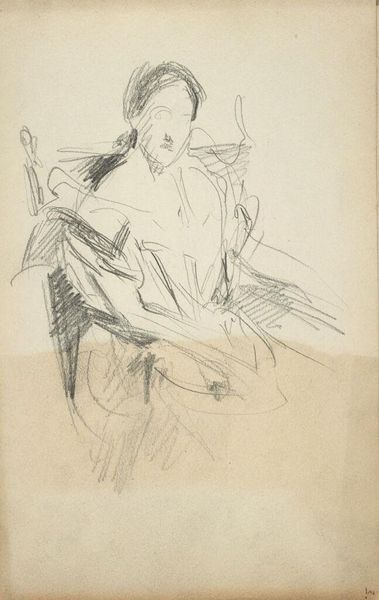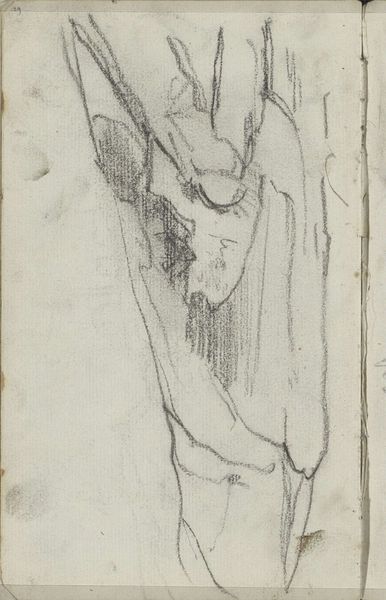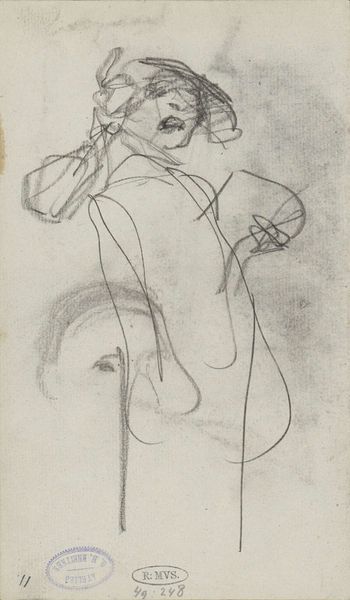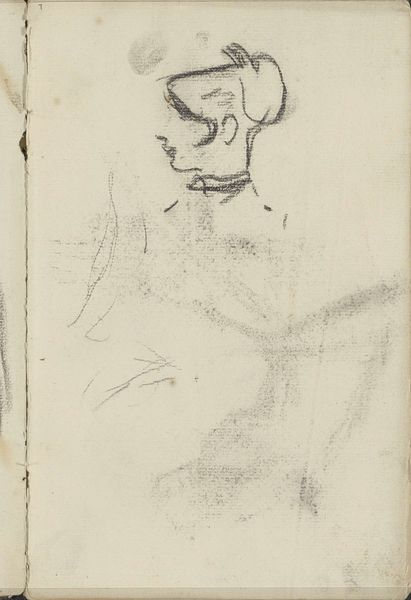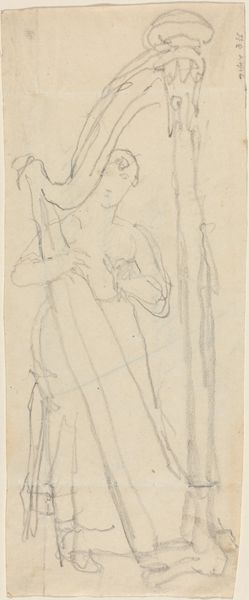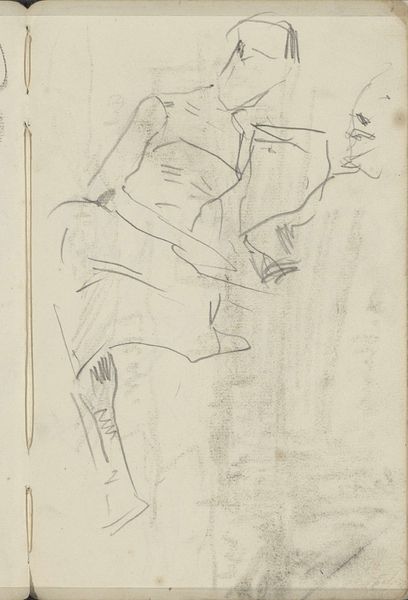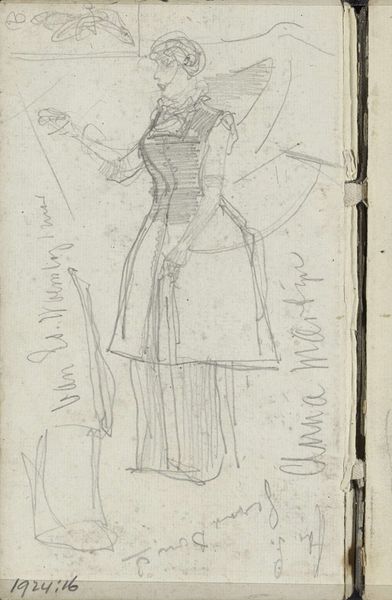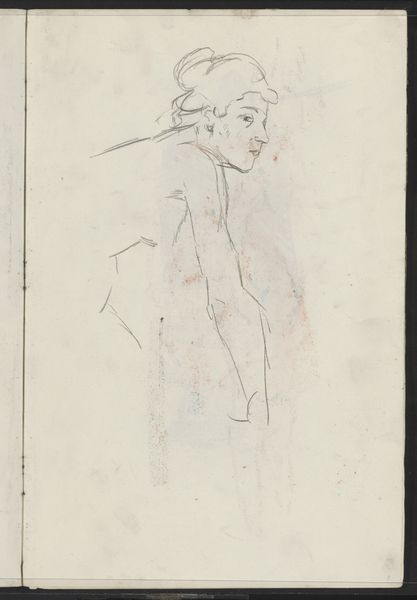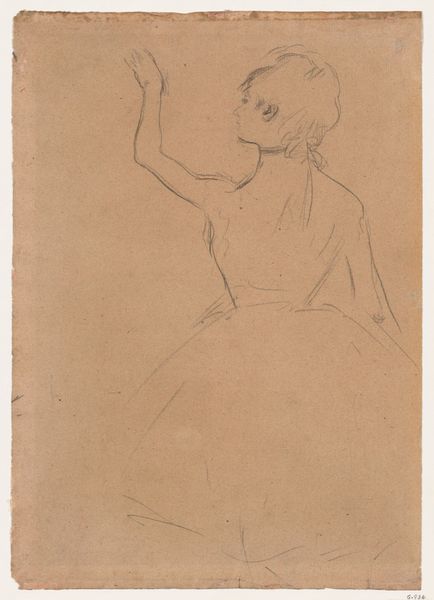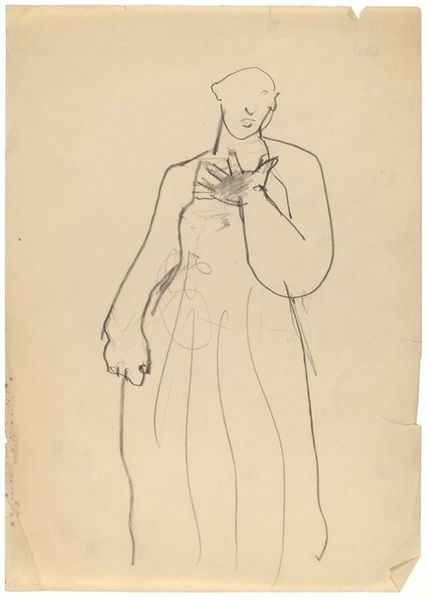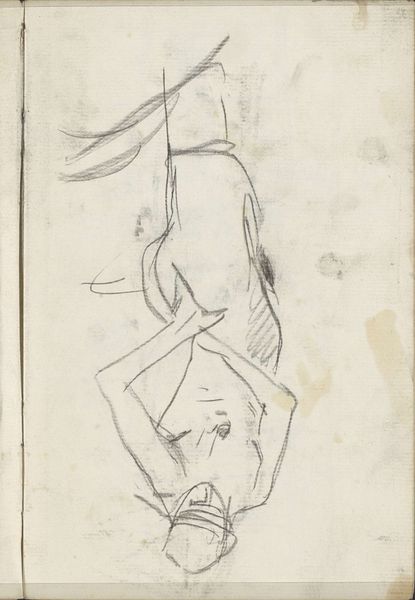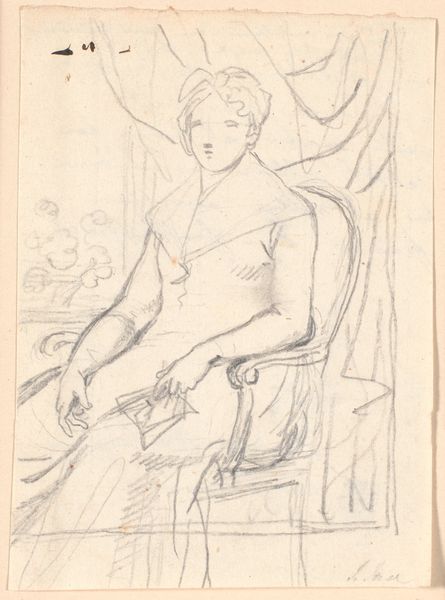
Dimensions: height 201 mm, width 126 mm
Copyright: Rijks Museum: Open Domain
Editor: So, this is *Standing Woman*, a pencil drawing by George Hendrik Breitner, created sometime between 1886 and 1923. It's currently at the Rijksmuseum. There's something really raw and immediate about it; almost like catching a fleeting thought on paper. What do you make of it? Curator: It does feel wonderfully spontaneous, doesn’t it? For me, it's like stumbling upon a page torn straight from Breitner’s personal sketchbook – a secret glimpse into his artistic process. He’s clearly more interested in capturing the *essence* of this woman, her posture, her presence, rather than a detailed likeness. You get a strong sense of Impressionism here: light, fleeting moments…a suggestion more than a statement. Notice how he uses these almost frantic pencil lines; there's a real energy in them, like he’s wrestling with an idea. What stands out for *you*? Editor: I’m intrigued by how unfinished it feels, especially the clothing. It feels so different from a polished studio portrait. The corset, especially, it's there, but just hinted at. Curator: Exactly! And isn't that fascinating? This wasn’t intended for public display, probably just Breitner playing with form and line, a kind of visual brainstorming. It also tells us something about the time period; the undergarments subtly allude to the constraints placed upon women in the 19th century, even if that wasn't Breitner's conscious intention. The lines themselves *become* expressive, a sort of emotional shorthand. Don’t you think? Editor: I think so, especially the face. There's almost something haunting in her expression. Curator: Beautifully put! It makes me wonder, who *was* she? A muse, a fleeting acquaintance, or simply a figment of Breitner’s imagination? The drawing invites us to complete the story. Editor: It's incredible how much information can be conveyed with so few lines. Thanks for pointing out the expressiveness of the linework. Curator: My pleasure! And thank you for highlighting that evocative ambiguity of it; after all, isn't art’s greatest power in what it leaves *unsaid*?
Comments
No comments
Be the first to comment and join the conversation on the ultimate creative platform.
